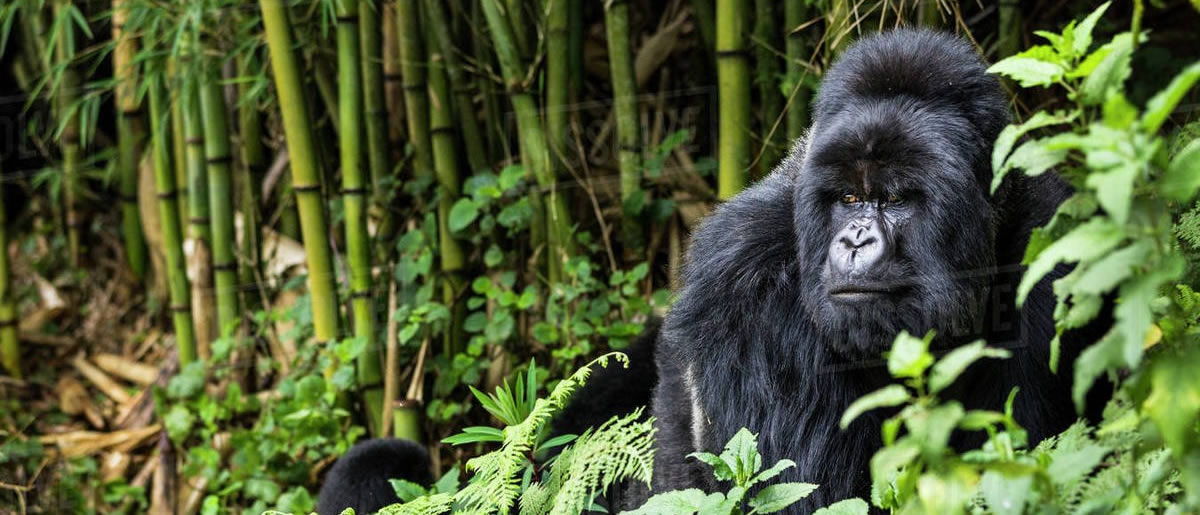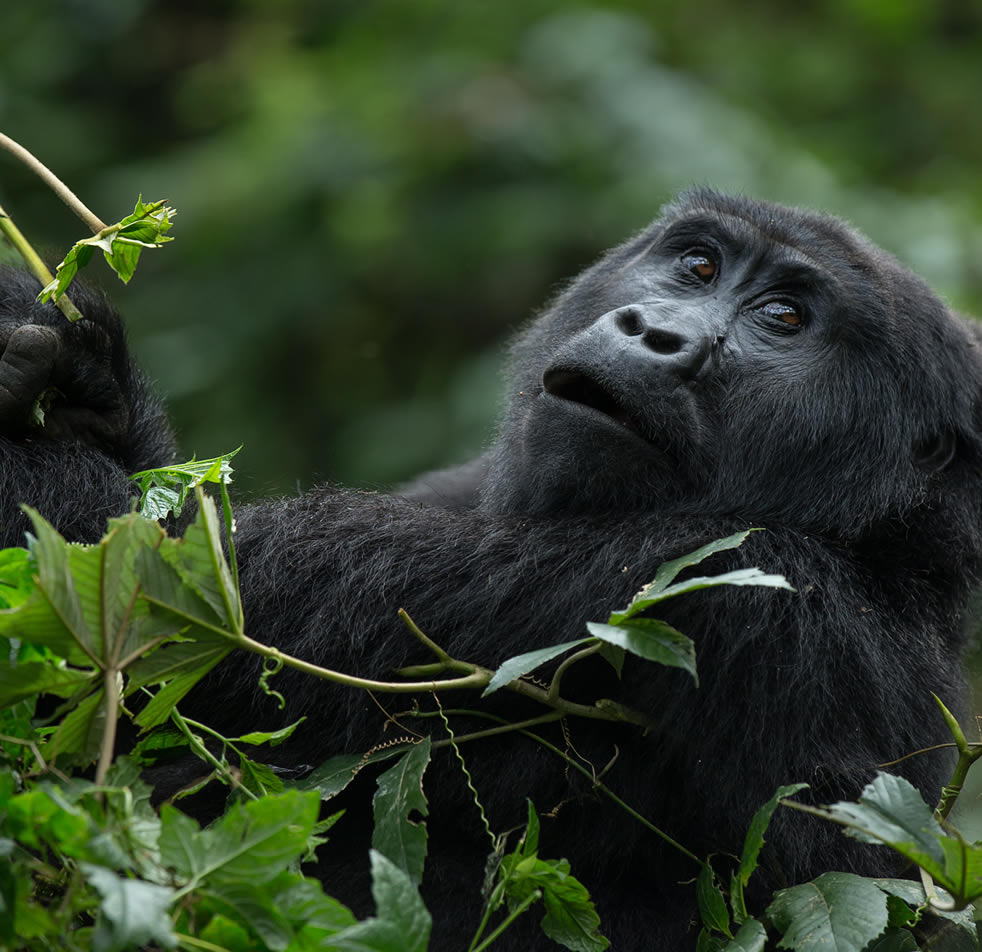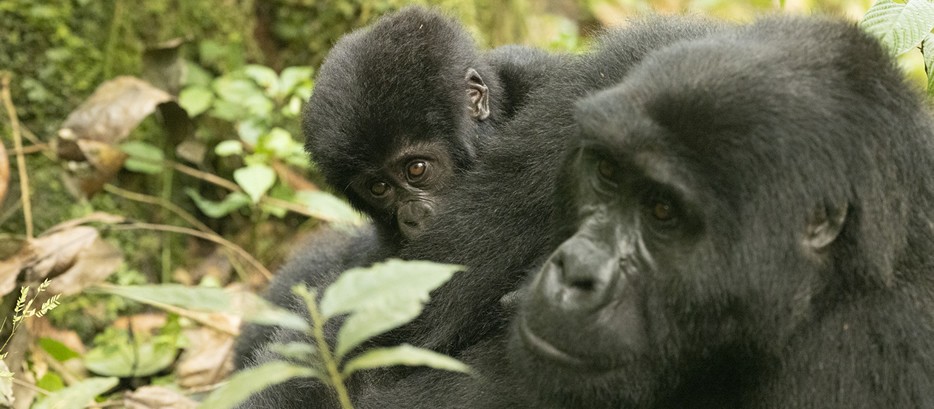
- admin
- December 23, 2024
- Wildlife Attractions

About Bwindi Forest
The name “Bwindi” was derived from the Runyakitara language, meaning “impenetrable”. This was because of thick vegetation and the extensive stands of bamboo interspersed amongst the larger forest hardwoods. The bamboo and thick ground cover of ferns, vines, and other plant growth severely hinder direct access on foot. It’s in this thick lush vegetation that we have 120 species of mammals, 348 species of birds, 220 species of butterflies, 27 species of frogs, and chameleons.
Accessibility
Bwindi and Mgahinga lie southwest of Uganda which is 520 km from the city centre about an 8-10 hrs. drive by road while volcanoes are located right in the heart of the city, Rwanda is a small country compared to Uganda, it takes you 3 hours drive from the airport to volcanoes national park then with Congo has various means to get there from road, water, and air transport but the preferred means would be flying to Rwanda the take 4-hour drive to Gisenyi at the boarder the later take 1hr drive to Virunga national park.
Details of the event
Accommodation All four national parks have well-developed accommodations ranging from budget to midrange and luxury, for example, Gorilla Forest Camp, Mahogany Springs, Buhoma Lodge, Bwindi Volcano Lodge, and many others, which all offer luxury services. A tourist here can easily choose and go to the accommodation facility of his/her choice. Rwanda also have many accommodations from the Da Vinci Hotel, and Sabyinyo Silverback Hotel, but tourists prefer Virunga Lodge. Congo too has a wide range of accommodations like Mikemo Lodge, Nyiragongo Summit Shelter, and Bukima tented camp.
Bwindi National Park, Gorilla Trekking Safaris
Bwindi Impenetrable Forest National Park in Uganda is the world’s largest habitat of critically endangered Mountain Gorillas. Bwindi National Park hosts over 400 Gorillas, comprising wild Gorillas, habituated Gorillas, and those in the habituation process. Bwindi forest is impenetrable with lots of undergrowth and is often referred to as a ‘place of darkness’. Because of the lush green vegetation that covers all through, trackers will clear the way for Gorilla trekking all year round, never having an impact on the thickness of Bwindi. Lying in southwestern Uganda at the edge of the Eastern Albertine rift valley, which neighbours Rwanda and Congo at the base of the Virunga mountains, the misty forest of the ancient days dates back as far as 2500 years. Bwindi’s impenetrable forest is indeed a true African wilderness, providing shelter to a further 120 mammals, including several primate species such as baboons and chimpanzees, as well as elephants and antelopes. There are around 350 species of birds hosted in this thick forest, including 23 Albertine Rift endemics.
Mountain Gorillas in Bwindi Forest
Mountain gorillas are the main tourist attraction, with half the population of 880 remaining in the whole world in the Bwindi forest. They are classified as critically endangered on the International Union for Conservation of Nature’s (IUCN) Red List of Threatened Species. Mountain gorillas were first discovered in 1902 in the Virunga Mountains, and news of the discovery attracted hunters who were curious and understood less about them. In 1925, a royal decree by Belgium’s King Albert created a gorilla sanctuary, Albert National Park, which eventually became Virunga National Park. In 1959, the American zoologist George Schaller undertook the first basic study of the mountain gorillas there.
Mountain gorillas live in forests in the mountains, where temperatures are often below freezing. They have thick fur to help them survive these conditions, but as humans have encroached upon their territory, they have been forced further up the mountains where they endure more dangerous conditions. They are herbivores, with a diet consisting of more than 100 species of plants. When fully grown, they can measure more than 5ft when standing and weigh 440 lbs. Mountain gorillas are social creatures that develop long-term bonds. They live in troops that include a male, the silverback, females, and their offspring. The silverback, as the head of the troop, determines their movement and time to feed. This male dominant goes ahead to defend its family from external threats.
Mountain gorillas are found in East Africa, mainly in Uganda and Rwanda, and in Central Africa in Congo, but we find a big number of 400 mountain gorillas out of 880 in the world in Uganda in particular. Bwindi and Mgahinga receive more tourists for gorilla tracking throughout the year compared to the other three national parks, volcanoes in Rwanda, and Virunga National Park in Congo. Each country is unique in its way, based on the cost of permits, distance, and terrain of the park. Tourists who have had a chance to visit all four national parks find each park with its uniqueness above all the same satisfaction with the mountain gorillas.

services
Social media done right
Lorem ipsum dolor sit amet, consectetur adipiscing elit, sed do eiusmod tempor incididunt ut labore et dolore magna aliqua. Lorem ipsum dolor sit amet
